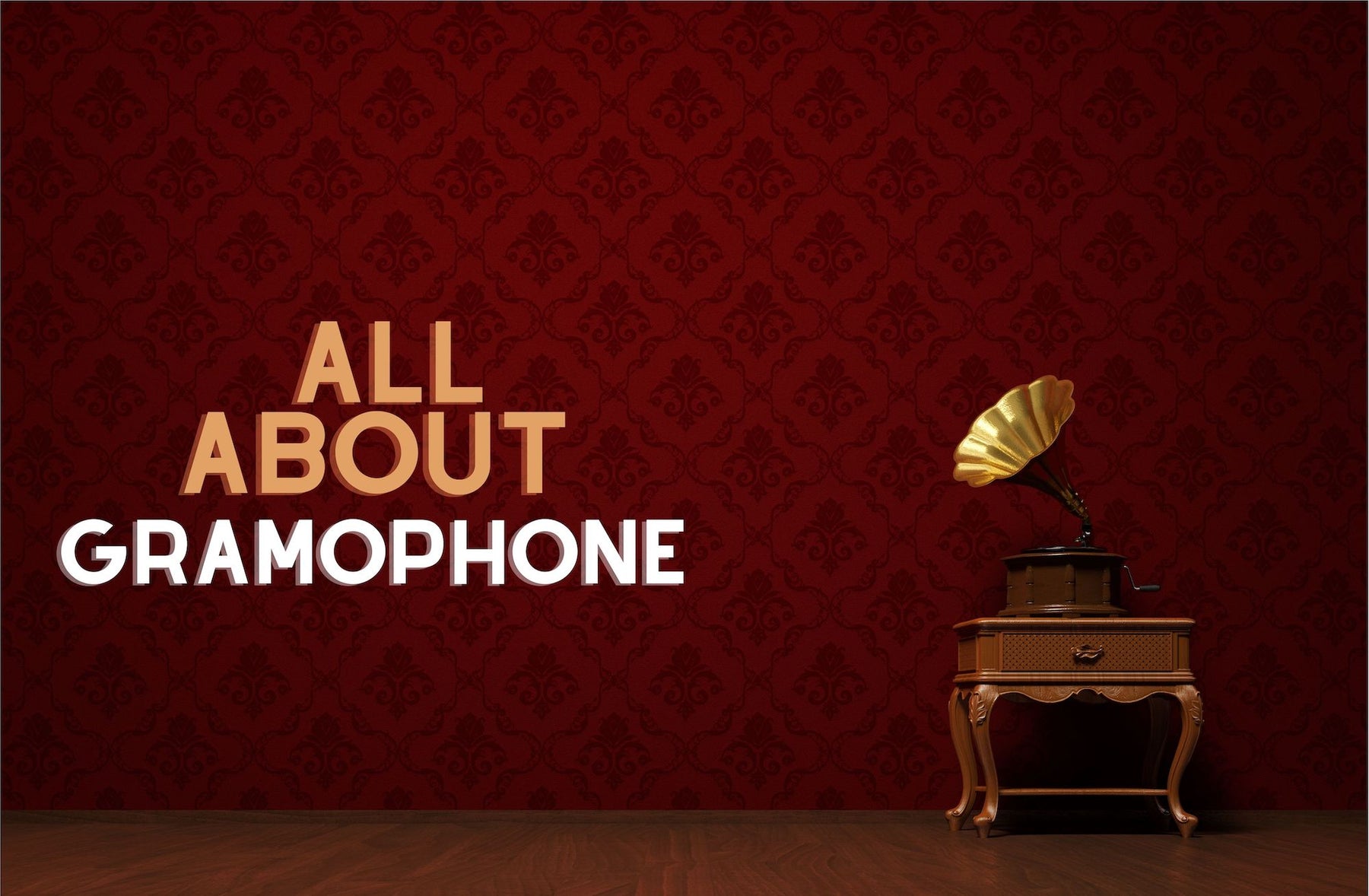
Gramophone - Why Do People Still Love It?
The gramophone is a vintage record player. Everyone loves vintages items as it gives them a sense of nostalgia. Vintage items have a story and a character that sparks curiosity amongst vintage lovers.
Music is an art form that has been loved by people from all walks of life. Music lovers claim that music was great back when there were record players. Gramophones can still be seen used by music lovers.
The market for gramophones and turntables is too very specific since it is vintage and the fans are peculiar as well. Collecting record players is vintage as well.
Music lovers describe the sound of the gramophone to be different and clear. You won’t know the difference unless you hear a real record. It is a sound unlike what you hear on your phone or speaker. It’s an experience one should expose to once in a while.
Who invented the gramophone and why?

Music is routinely listened to on phones, computers, and mp3 players nowadays, but recording music was not always simple or easy. In 1877, Thomas Edison sought to create the first music recording and playing system. His device was dubbed the "phonograph," and it worked by recording sounds on circular cylinders. However, the production quality was subpar, and each tape could only be played once.
Alexander Graham Bell improved on Edison's idea by creating the first graphophone, which functioned with wax cylinders. The sound quality was far better than the phonograph, but each cylinder had to be recorded separately. This made it impossible to mass-produce the same recording, limiting its usefulness.
As a result, Emile Berliner patented the first practical sound recorder in 1887, which he dubbed the phonograph. Unlike the previous two attempts, the phonograph did not employ cylinders, instead opting for flat glass records. A tiny groove was scratched into the round surface of the discs during recording. These grooves could then be inserted beneath the arm of the gramophone, where a needle would read the sound vibrations and send them to the speaker.
Finally, using a Gramophone, mass-production of records was conceivable, and one recording resulted in multiple discs. Berliner founded the United States Gramophone Company in 1894, recoding and manufacturing hundreds of records each year.
Where was it invented?
Emile Berliner, a German immigrant working in Washington, D.C., patented a successful sound recording system on November 8, 1887. Berliner was the first to abandon cylinder recording in favour of flat discs or records.
How does the gramophone work? (Technology)
The earliest phonograph, unlike today's turntables and record players, had only four essential elements to make a sound.
A small needle, groove, diaphragm, and horn were all part of the original gramophones. The gramophone's little needle, like your current stylus, is attached to the groove that corresponds to your headshell.
The needle is then connected to the diaphragm, which is now your platter, and the diaphragm is then connected to the horn or pre-amps. The diaphragm movements will elicit the recorded sound in the single records.
The sound is created solely by vibrations and does not require any electrical setups. The gramophone would store sound in reverse by playing music with the horn, and the sounds would be consolidated in the diaphragm.
What's the role of the needle in a gramophone?

The gramophone's little needle, like your current stylus, is attached to the groove that corresponds to your headshell. The needle is then connected to the diaphragm, which is now your platter, and the diaphragm is then connected to the horn or pre-amps.
What material was used to make the gramophone and its records?
Parts of a gramophone
Disks
Around 1892, the gramophone was brought to life by the discs. At the time, they were between 5 and 10 inches tall. It wasn't until 1908 or thereabouts that recording on both sides of the disc became practical.
Spindle & Turntable
A rubber belt turns the turntable, which is comprised of a spherical steel or aluminum component. To play a record, the turntable and spindle work together to spin it. The turntable also retains the disc in place while it rotates.
Stylus
The needle that plays the record or disc is this one. For the listener, it reads the music or sound. The playback device on early models was a sapphire or diamond. Instead, copper and steel were introduced in the early 1900s.
The Horn
When you say gramophone or phonograph, most people immediately think of the horn of a gramophone. It was the part of the device that made it possible to hear the playback.
They would insert a muffling ball in the horn's entrance to change the level of the sound it was making.
Records
Have you ever wondered what the disc in your hands is made of every time you play a record? Sure, the name of a vinyl record is a big hint, but it's got to be more complicated than just a flat plate of plastic, right?
The resin mix used to make a vinyl record is made up of a combination of the following materials:
- PVC is an abbreviation for Polyvinyl Chloride.
- Polyvinyl Acetate (PVA) (PVA).
- Colorants.
- Stabilizers for heat.
- Plasticizers.
- Lubricants.
- Fillers.
The ingredients listed above are combined during the manufacturing process to create the discs we listen to on our turntables, and each ingredient has a variable but important role to play.
Do gramophones need electricity?
The term "gramophone" can apply to any type of record player (as can the term "phonograph"). However, in general, the name refers to early record players that were powered by mechanical methods and reproduced music without the use of electricity.
Gramophone vs Phonograph

Nowadays, the terms phonograph and gramophone are sometimes used interchangeably, yet they are two distinct monumental inventions that were created at a time when technology had not yet taken over all areas of life.
Begin with, the phonograph was invented thirteen years before the gramophone and was considered the first talking machine because of its ability to playback and record sounds.
The most fundamental distinction between the two is that the phonograph produces music using a spinning cylinder, whilst the gramophone employs flat discs.
With time, and because it was well established that the phonograph was the prototype of the gramophone, both terms came to mean the same thing: a device that could record and play music or sound.
From 1897 until 1910, the term "phonograph" was still in use over the world, particularly in the United States. To avoid being influenced by the United States, the United Kingdom changed the name of the phonograph to the gramophone in 1940.
Why do people still love gramophones at their place?

Of course, the gramophone's most revolutionary effect on people's lives would be our unrestricted access to music, regardless of genre, at any time and in any place.
Music is an important part of culture and consumerism, and with the invention of the gramophone, sounds were combined with lyrics, resulting in a growth in the music industry and related professions such as sound engineering and musical artistry.
There were just a few prominent genres at the time the gramophone was invented, and jazz was one of them. As a result, the advent of the phonograph is seen as pivotal in the rise of jazz in American music history.
The invention of gramophones changed people's lives.
How to add a gramophone as a part of your decor?
A gramophone can act as a part of your décor. There are various places where you can buy a décor piece gramophone.
It will be an apt addition to your house of any interior design style. A statement piece that attracts your guests as it's so unique since it is very unlikely to see gramophones as a piece of decor today.
You can put it on the corner shelf and still, it will grab all the attention of your interior design. If you are a music lover, you can add a shelf full of vinyl records with a gramophone.
Where can you purchase a gramophone at affordable prices?
At The Handmade Store, we have a vintage gramophone at the most affordable price.
This antique gramophone is handcrafted by extremely skillful local artisans. Solid season wood is used for the base with handcrafted authentic carving by the artisans. The copper horn has a floral design imprinted on it.
It is designed to replicate the vintage HMV Gramophone Phonograph Record of approximately 1908.





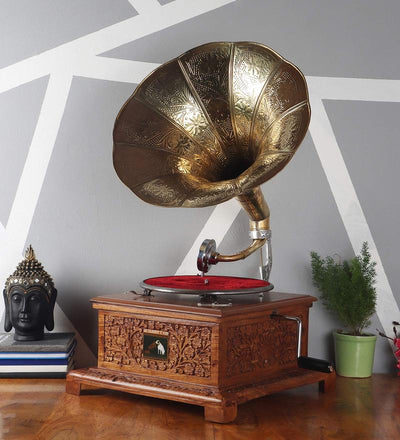
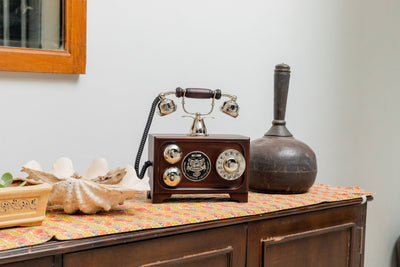

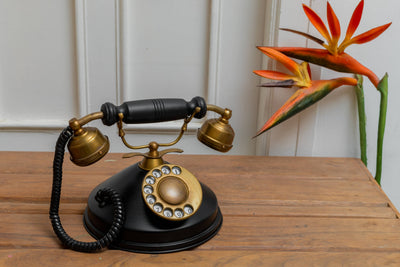
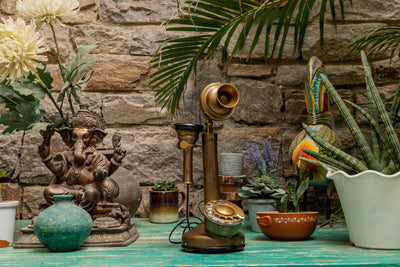
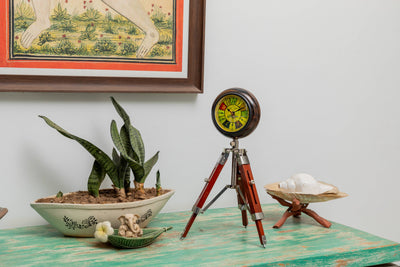
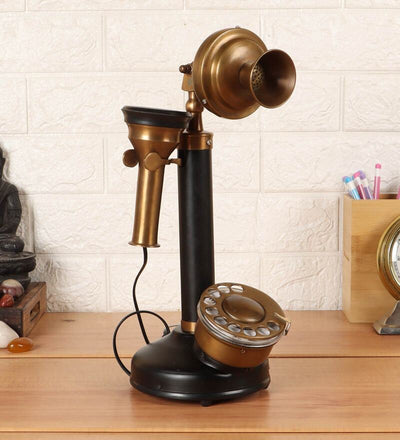
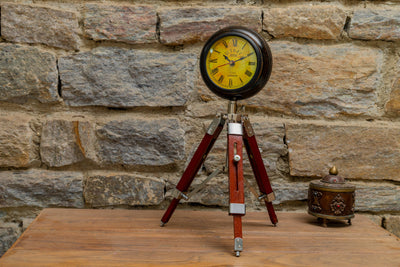
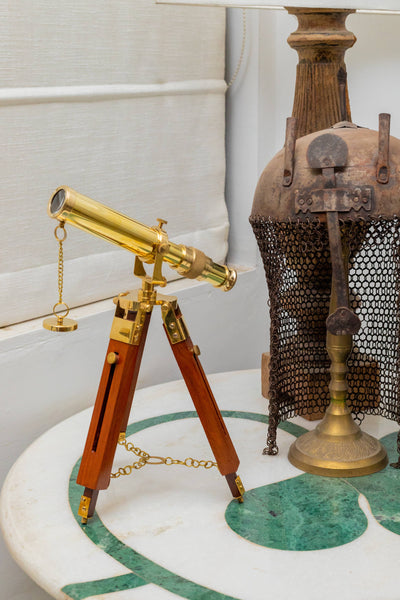
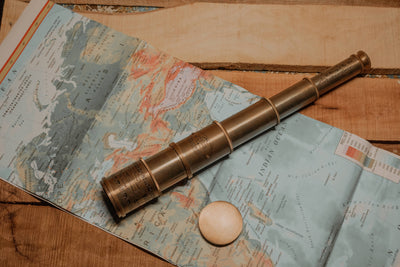
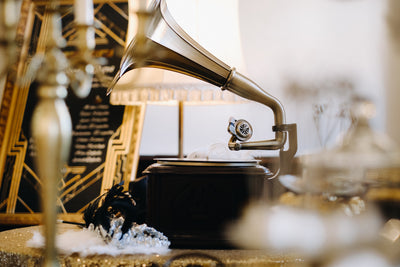


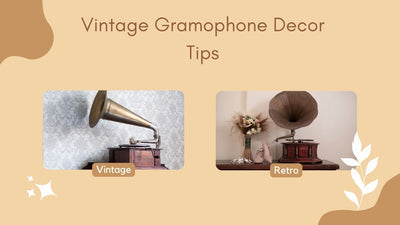



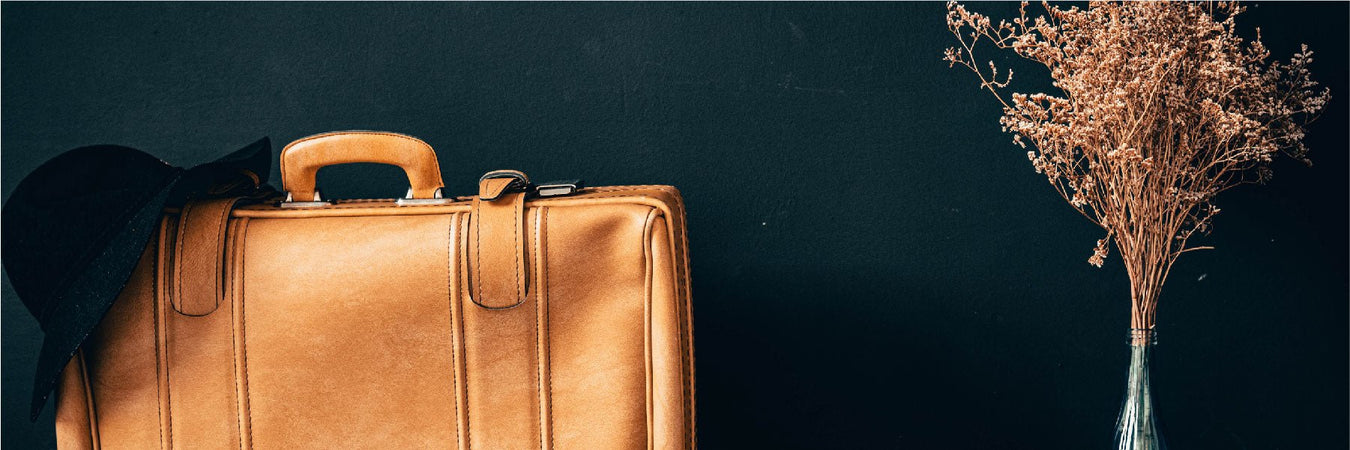
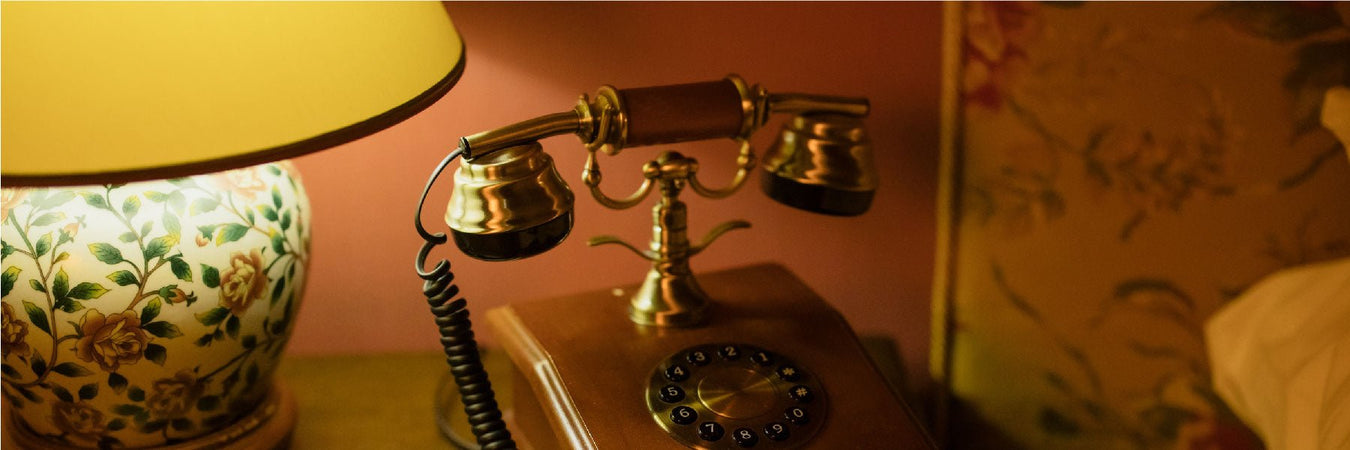
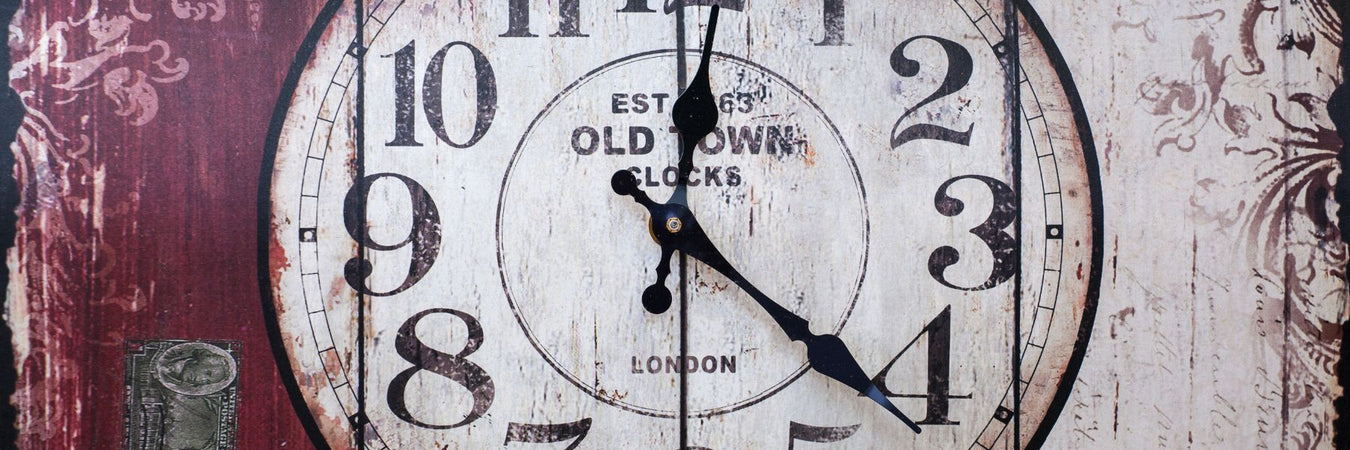
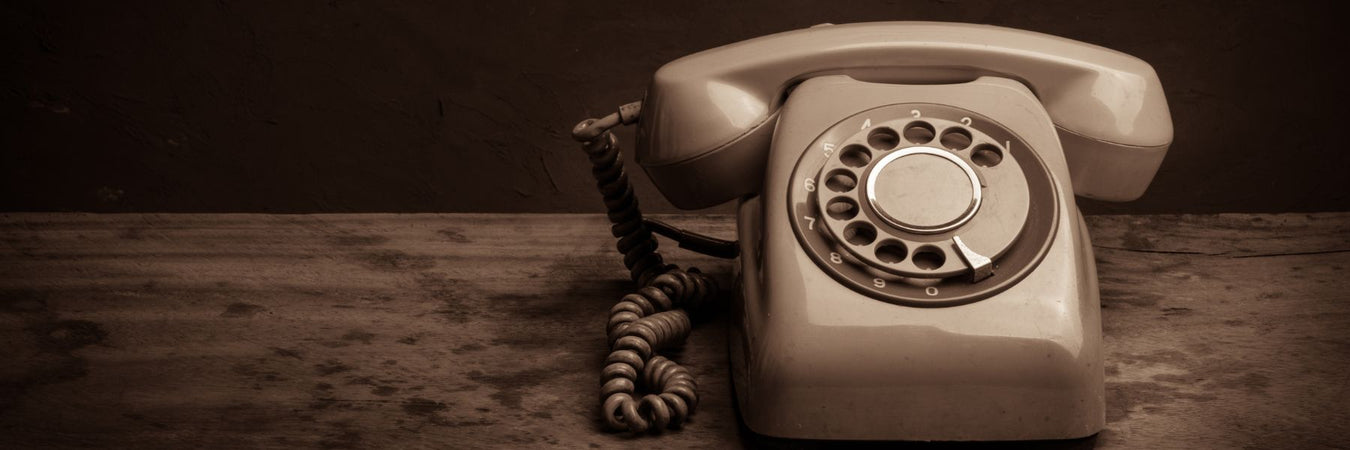
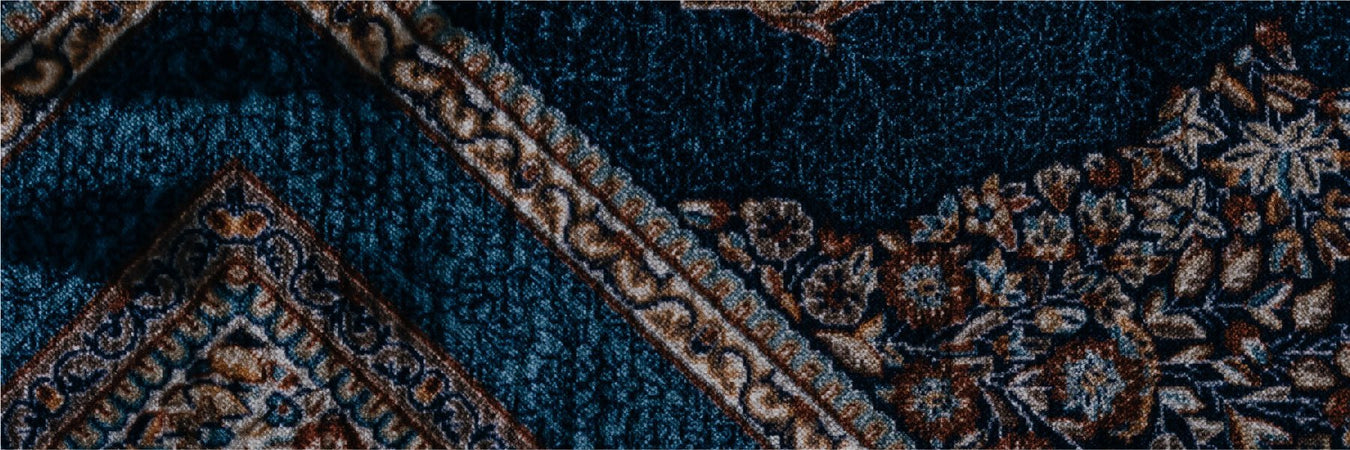

Leave a comment